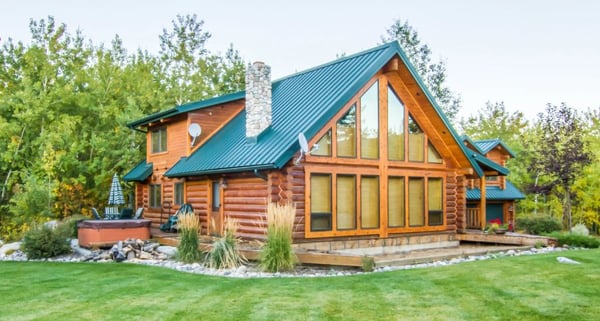Metal roofing panels are one of the most durable and long-lasting building materials available on the market today. When all the components of the roof are installed correctly and routine visual inspections are completed, these roofing systems can last for decades to come. However, if your panels are improperly installed, weathertightness issues may be a concern. Let’s explore common weathertight issues and their solutions.

What is Weathertightness?
Weathertightness typically refers to a roofing or exterior surface’s ability to resist weather elements like rain and snow, and its ability to prevent moisture from penetrating the structure beneath. Ensuring your roofing system is weathertight helps you avoid costly and time-consuming issues related to moisture like leaks, rot, and more.
Common Causes of Weathertightness Issues & Solutions
One of the easiest and most common ways to know if you have weathertightness issue related to your roofing system is the appearance of staining from leaks showing up inside the home. If you ever notice leaking or water stains on your interior roof, it’s time to address the issue. These issues on a metal roof can be caused by any of the following:
Improper fastening during installation
Fasteners are a crucial component of all metal roofing systems. Whether you choose a concealed or exposed fastener panel, it’s important to ensure that the fasteners are properly installed so your roof can last up to and longer than its expected lifespan and to keep moisture out. If fasteners are overdriven, underdriven, or driven in at the wrong angle, you could be facing potential weathertightness issues.
Overdriving a fastener can put unnecessary stress on metal panels, strip your screws, and make them vulnerable to water. Underdriving your fasteners can allow water and even wind to get underneath the metal panels more easily. Driving your fasteners into the panels at an angle rather than at a vertical, straight angle can also allow moisture to seep underneath. It’s important to secure your fasteners to your panels at a correct angle while also being careful to not over or under drive them.
You can read more about how proper fastening during installation affects metal panel’s performance here.
Incorrectly using sealants
Sealant is another important component of a metal roofing system and is designed to help protect your structure from weathertightness issues. It helps to seal small spaces, crevices, and your overall system from moisture intrusion. Sealant helps make a roof as weathertight as it can possibly be and serves as an extra line of defense against water leaking into your structure.
During the installation process, if your sealant is not properly adhered to your roof deck and panels in all the places it needs to be, you could face some weathertightness issues. It’s so important to ensure you are properly sealing your system to avoid these costly and damaging problems.
Improper installation of vents, skylights, and other roofing features
When there are certain elements on your roof like vents, skylights, chimneys, and other penetrations, if they’re not properly installed weathertightness issues may occur. These areas must be sealed correctly and be able to divert water away to avoid any weathertightness issues.
It’s important to take the thermal movement of panels into consideration around these features as well. As metal expands and contracts with changing temperatures, it will move slightly. There are accessories and installation methods to follow to ensure you’ve got these features properly installed so you don’t have to worry about moisture or water leaking into your roofing system.
You should talk to your Product Specialist about your specific roofing needs to ensure you have all the right accessories ready to go when it comes time to install.
Key Takeaways
All in all, the biggest takeaway to remember to avoid weathertightness issues with your metal roof is to have it properly installed. If you are hiring a contractor to install your metal roof, you must make sure they have experience installing your selected panel profile. Installing a Corrugated roof is much different from installing a Standing Seam roof. Ask for references, proof of licenses and insurance, installation warranties, and how exactly they’ll install your new metal roof. There are tons of tips and tricks out there to make sure you’re hiring the best of the best when it comes to metal roofing contractors.
One of the best ways to ensure your roofing panels are working and performing the way you want them to is to complete routine visual inspections annually or bi-annually. Metal is an extremely low maintenance material and doesn’t require any cleaning, scrubbing, sealing, or other time-consuming maintenance. You just want to simply give your panels a thorough visual inspection to catch any small issues before they become big problems. You can read more about how to do a visual inspection on your roofing panels here.
Metal roofing is one of the most weathertight and durable roofing solutions on the market. As long as your panels and all their components are properly installed, you can be confident in knowing your roof will last for up to 70 years or longer without fear of weathertightness issues.
If you have questions about metal roofing solutions or are interested in metal roof panels for your home or building, contact the Bridger Steel team today. Our team of expert Product Specialists can help you find the right panel profiles and color/finish specific to your needs. Whether you need help choosing the right panel or don’t know where to start, our team is here to help.
Contact Us today or fill out the Get a Quote form to get started!
